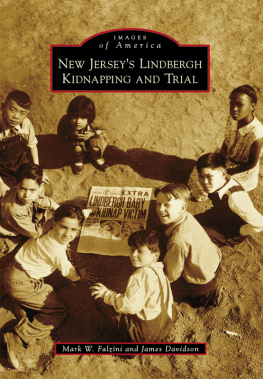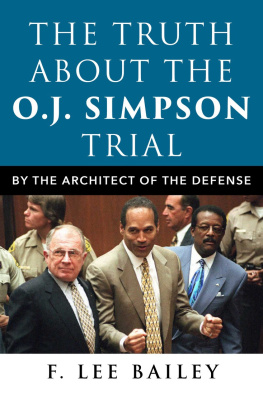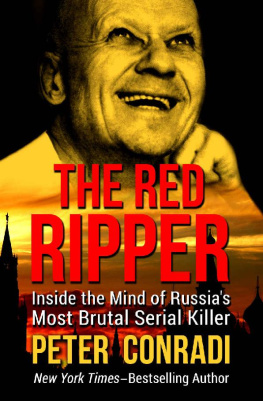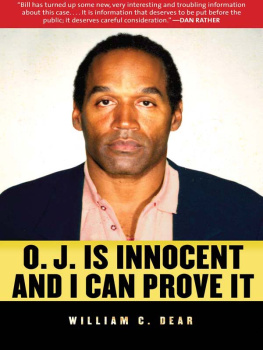CHAPTER 1
PROBLEMS
P hiladelphia had a problem, but it wasnt the one law enforcement officials thought they had.
In the waning months of 2009, the Philadelphia District Attorneys Dangerous Drug Offender Unit had become increasingly aware of illegal drug scripts for Oxycontin that had flooded the streets of Philadelphia and other Pennsylvania cities. Their investigation into the shadowy world of prescription drug trafficking, conducted in conjunction with the Federal Drug Enforcement Agency and the Philadelphia Police Department, began to focus on the largest source of those illegal prescriptions a medical office euphemistically called the Womens Medical Society, located at 3801 Lancaster in a rundown brick building in the poor urban West Philadelphia neighborhood of Mantua.
Adding to the urgency of this investigation was disturbing information gathered by a detective with the District Attorneys office, James Wood, who had conducted an interview with an employee of the Womens Medical Society in early January, 2010. She described squalid conditions and unqualified workers who essentially were engaged in the unlicensed practice of medicine in Gosnells absence. Of particular interest was her account of untrained workers administering dangerous controlled substances and sedation without supervision, and that a woman had died as a result just a couple of months before.
As Detective Wood began to look further, he discovered that there had been no police report filed on the womans death. A visit to the Medical Examiners office was more productive. There, Wood learned that a Womans Medical Society patient named Karnamaya Mongar died from an overdose of Demerol, a cheap narcotic that had fallen out of favor in the medical community due to its numerous dangerous side effects.
The owner of the facility was Dr. Kermit Gosnell.
At the time, that name did not mean much to investigators, but perhaps it should have.
***
Kermit Barron Gosnell had a promising future as a young man, despite his humble beginnings. He was born in Philadelphia in February 9, 1941, to a father who worked as an attendant at a gas station and a mother who held down a job as a government worker.
Kermit was a bright boy who excelled in school. In 1959, he graduated among the top students in his class at Philadelphias Central High School. Later, he earned a bachelors degree from Dickinson College in Carlisle, Pennsylvania and in 1966, he earned his medical degree from the Jefferson Medical College in Philadelphia.
Wanting to give back the poor urban community where he was raised, as a new doctor Gosnell opened a practice in West Philadelphia, where he offered medical care to the impoverished. He also worked at a substance abuse rehabilitation clinic in the blighted neighborhood of Mantua, and for a teen aid program.
But somewhere along the line early in his career, Gosnells altruistic work with the poor took a turn, and he became interested in what was then the illegal practice of abortion, and the big money that could be made doing them.
In the early 1970s Gosnell became acquainted with Harvey Karmen, a psychologist with a dark history that included his own ghoulish fascination with abortion. While working on his doctorate at UCLA in the 1950s, Karmen started an underground railroad for women seeking illegal abortions. Soon, despite being completely unqualified, Karmen began doing abortions on women himselfthat is, until 1955, when he checked a young pregnant woman into a seedy California motel and used a speculum and a nutcracker to abort her unborn baby. Tragically, the woman died from complications to Karmens butchery. As a result, Karmen was convicted of committing illegal abortions and spent 2 1/2 years in a California State Prison.
Apparently, his incarceration did little to convince this back-alley abortionist to amend his ways. After his release, Karmen continued his experimentation with abortion techniques on vulnerable women he that used as human guinea pigs, according to an article written by James Taranto that appeared in the Wall Street Journal on April 18, 2013. Taranto describes Karmens invention of a grisly abortion device known as the Super Coil, which Karmen had earlier used experimentally on rape victims in Bangladesh, thanks to a sponsorship provided by International Planned Parenthood.
Complication rates were high, and little wonder. A colleague of Karmans Philadelphia collaborator described the contraption as basically plastic razors that were formed into a ball They were coated into a gel, so that they would remain closed. These would be inserted into the womans uterus. And after several hours of body temperature the gel would melt and these things would spring open, supposedly cutting up the fetus.
Karmens Philadelphia collaborator was none other than Kermit Gosnell, who was already involved (and apparently well-known in the Philadelphia area) for conducting illegal abortions at his West Philadelphia medical office that served double-duty as a back-alley abortion mill.
Karmen would team up with Gosnell for what became known as the Mothers Day Massacre. To make a statement about abortion, Karman assembled 15 low-income women in their second trimester of pregnancy and put them on a bus from Chicago to Philadelphia on Mothers Day weekend in 1972. Their destination? Gosnells Womens Medical Society, where Gosnell would conduct experimental super coil abortions on them. Gosnell inserted plastic coils invented by Karman into the uteri of the pregnant women.
As one might expect, the experiment went awry, and nine of the fifteen women suffered serious complications, including hemorrhage, infections, retained fetal body parts, a perforated uterus, and one hysterectomy.
Instead of revolutionizing second-trimester abortions, the botched experiment on the nave women led to a federal investigation that changed the protocols for testing future abortion devices. However, the investigation did not adequately remove Gosnell as a threat to women, and the reforms that were implemented were shallow.
Yet in the end, while one would think that he should have landed in jail for the super coil fiasco, nothing much happened to Gosnell. When the US Supreme Court issued its landmark Roe v. Wade decision that decriminalized abortion, it appeared that Gosnell was in the clear.
Yet it seems that Gosnell was always a bit lax in following the rules. In 1990, Gosnell admitted that he had engaged in the aiding and assisting in the unlicensed practice of medicine by allowing a physicians assistant who worked for him to see patients and prescribe drugs as if he was a licensed physician. Gosnell was issued a reprimand and ordered to pay a fine of $1,000 in Pennsylvania.
Four months later, the New York State Board of Professional Conduct also reprimanded and censured Gosnell for his unprofessional conduct in Pennsylvania and fined him another thousand dollars. Gosnell eventually stopped practicing in New York and allowed his license there to lapse.
This disciplinary episode, along with the super coil fiasco, should have raised red flags and prompted authorities to monitor him closely. Instead, the warning signs were ignored, and Gosnell was left to conduct his affairs as he saw fit without much worry of regulatory oversight.
By all accounts, Gosnell continued to practice as a likeable and surprisingly well-respected doctor and community member. He maintained the appearance of an intelligent, soft-spoken and well-educated physician whose friendly manner made him an unthinkable candidate for the title of Philadelphias Biggest Drug Pusher, much less its most prolific serial killer.
As the years went by, Gosnell married and divorced twice before wedding his third wife, Pearl. He fathered two children and settled down to an outwardly unremarkable, though respectable life.








